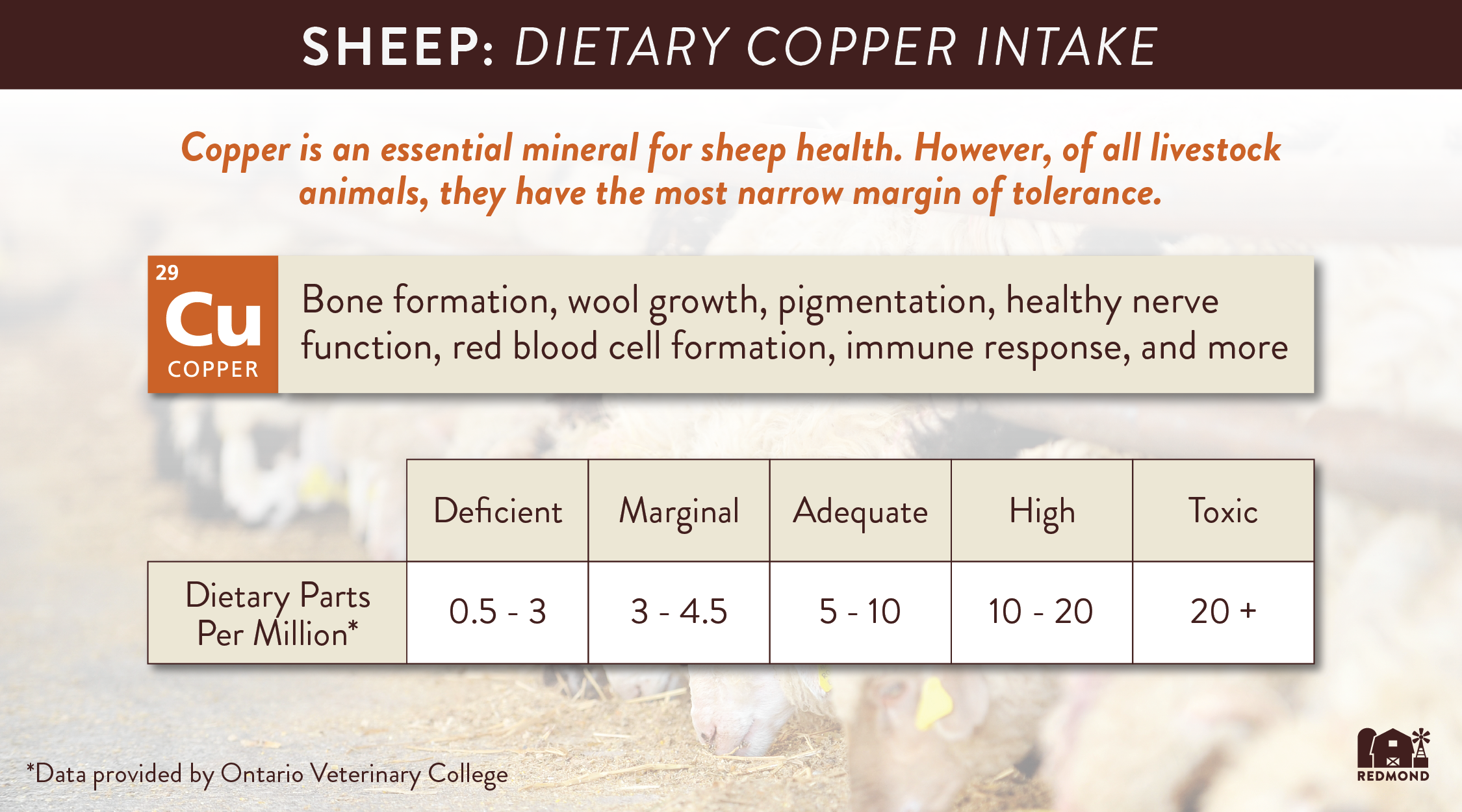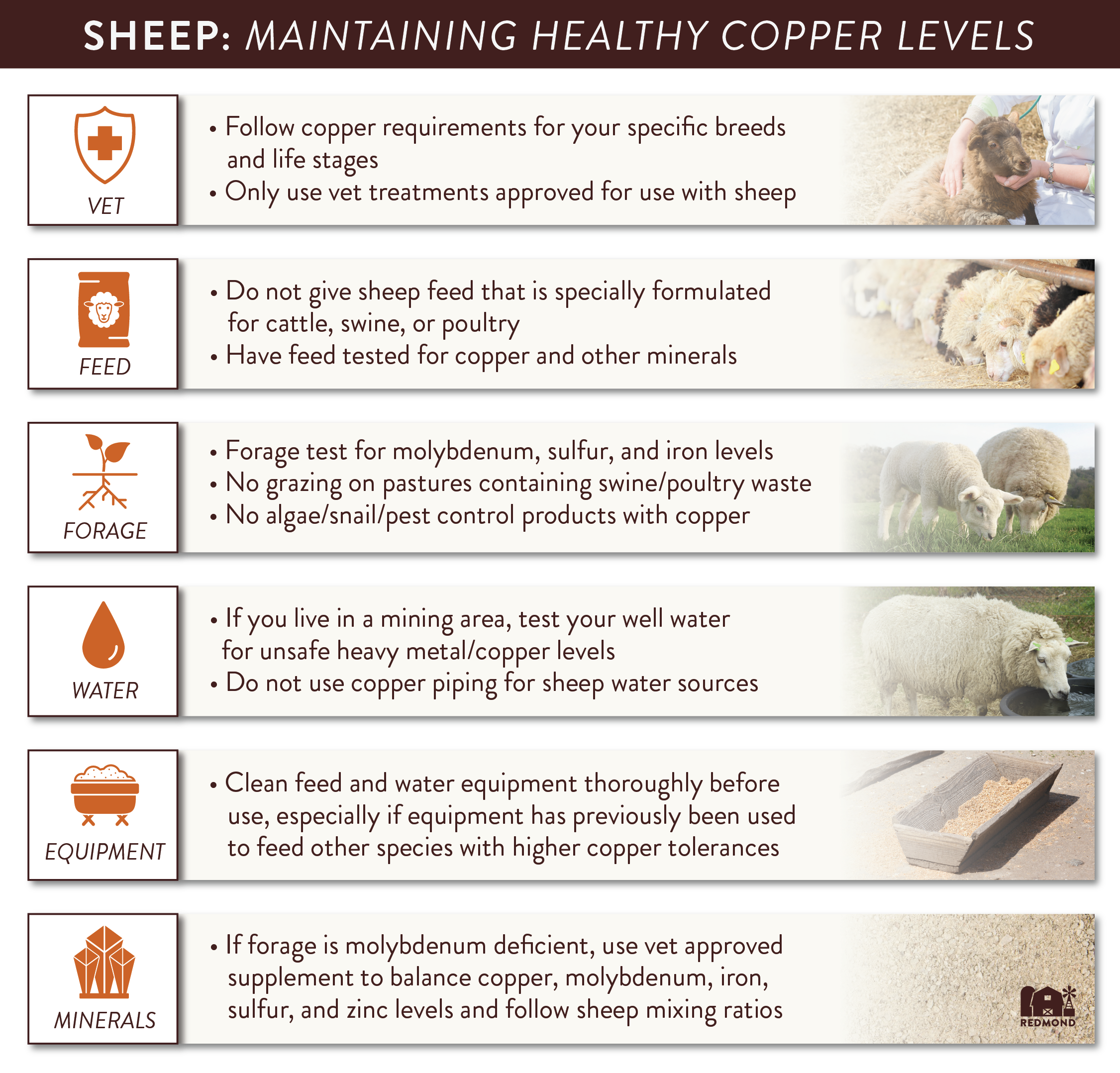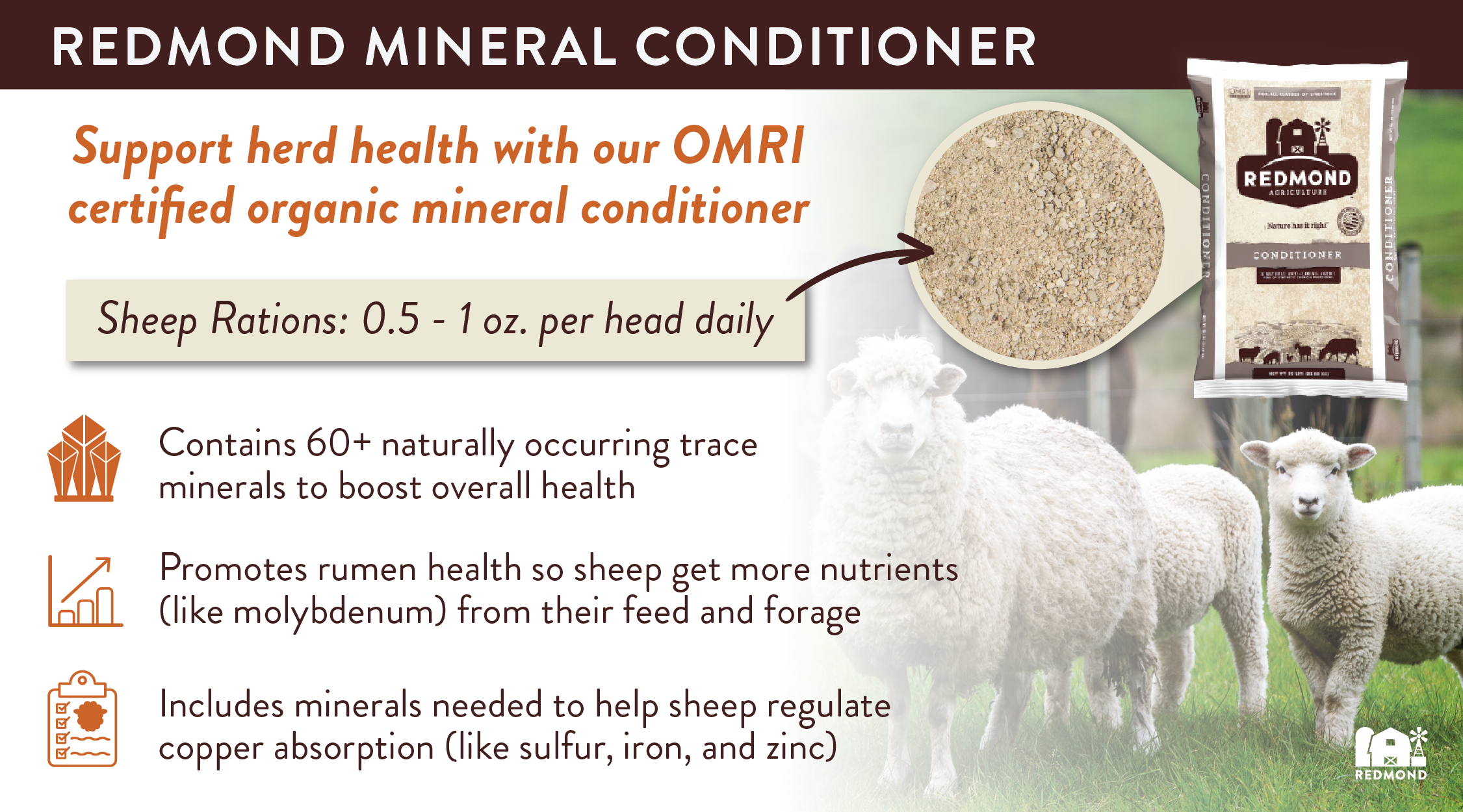Can Sheep Eat Copper in Feed
Copper Poisoning In Sheep
Copper is on the list of "heavy metals" that are essential for certain biological functions. Dietary copper for sheep supports: Some farmers have become so scared of copper, that they avoid it all together and their herd health suffers. Sheep absolutely need copper to survive, just not as much as other animals. Sheep have a thin threshold between copper deficiency and toxicosis because their bodies process copper differently than most other species. Most animals absorb copper in their small intestines. Sheep absorb copper in both their small and large intestines plus store excess copper in the liver. From there, their kidneys gradually eliminate excess copper as waste. However, if their liver hits its storage capacity and cannot hold any more, it will release large amounts of copper into the blood. According to the Ontario Veterinary College (OVC), sheep need around 5-10 parts per million (ppm) of dietary copper. It is important to note that copper needs can vary depending upon the breed and life stage of your sheep. Consult your veterinarian to ensure you are meeting the specific requirements of your herd. Sheep need certain minerals to interact with copper to control how much they absorb and excrete. Molybdenum is the most common mineral used by sheep to prevent copper toxicosis. Plants intake molybdenum from the soil, which are then ingested by foraging sheep. Molybdenum levels must also be monitored because intaking too much can result in a copper deficiency. Copper to molybdenum ratios should be around 6 to 1 respectively. The OVC also advises that sulphur, zinc, and iron can also interact with copper to help keep levels where they belong. Once symptoms of copper toxicosis appear, it is very difficult for a sheep to recover. Contact your veterinarian immediately if you notice symptoms or suspect health deterioration in your herd. According to Louisiana State University (LSU) Ag Extension, copper toxicosis displays the following symptoms: The OVC advises that some neurological symptoms (from hepatic encephalopathy) can act as warnings for chronic liver damage as well. These symptoms include: Because copper toxicosis is difficult to reverse, prevention is always the best practice. Let's take a look at how to maintain healthy copper levels in your herd. Here are some best practices for helping your sheep maintain healthy copper levels. Founded by farmers over 50 years ago, Redmond Minerals is lucky to share the health benefits from our rich, ancient mineral deposit. Our mineral program is used by farmers across the country, to raise happy and healthy animals. Our Redmond Mineral Conditioner contains an expansive nutrient profile with over 60 trace minerals. In ruminant herds, like sheep, our conditioner buffers rumen and increases how many nutrients your animals are absorbing from their forage and feed. With 0.5 - 1 ounce per head daily ration, your sheep can better absorb molybdenum while also providing them with zinc, sulfur and iron to interact with their copper intake. When you look at the ppm listed on the bag, don't be alarmed when you see a number higher than the recommended copper intake. Remember that when you add the mineral supplement to your animals' feed, you are adding to a larger food intake, just like diluting a substance in water. Just follow the ration suggestions for sheep and your herd health will improve accordingly. Animals crave our minerals, so introducing this supplement will be an easy and beneficial choice you can make for your herd. Give us a call at © 2021 Redmond Minerals Inc. The Lowdown on Copper
How Much Copper Is Safe For Sheep?

The Importance of Mineral Balance
Signs of Copper Toxicosis
How To Maintain Healthy Copper Levels

Veterinarian Services
Feed
Forage
Water Sources
Equipment
Mineral Supplements
Redmond Mineral Conditioner

A Word About Feed Ratios
 to try our supplements; both you and your animals will love it!
to try our supplements; both you and your animals will love it!
Source: https://blog.redmondminerals.com/agriculture/copper-poisoning-in-sheep
0 Response to "Can Sheep Eat Copper in Feed"
Postar um comentário